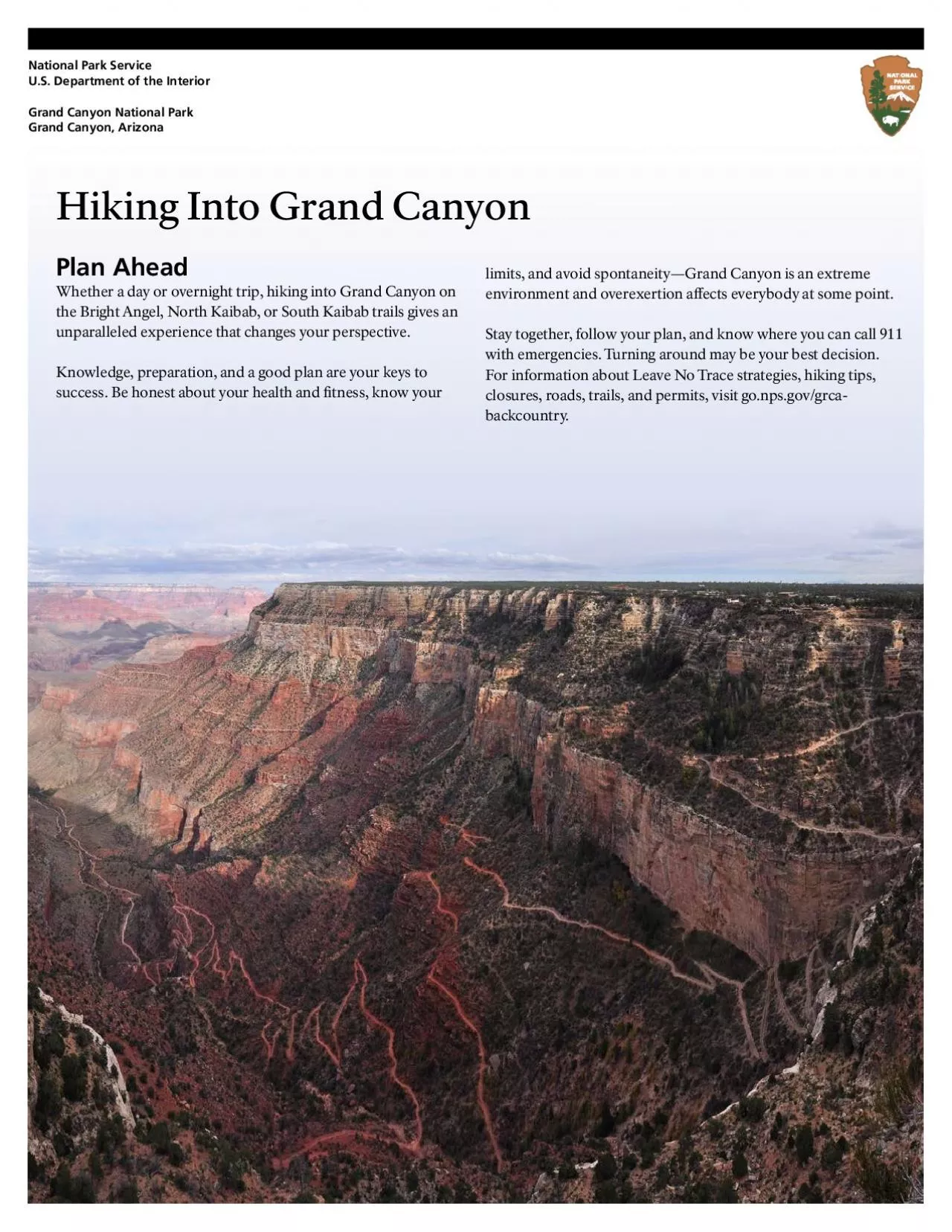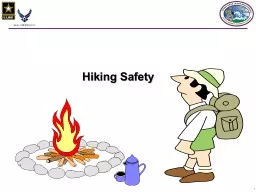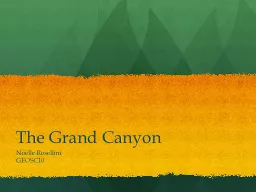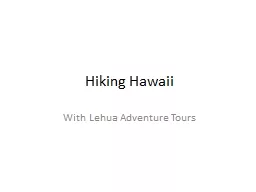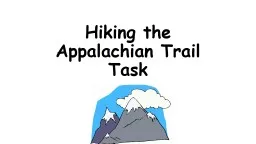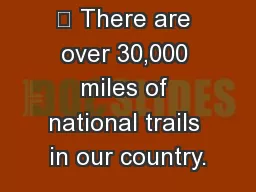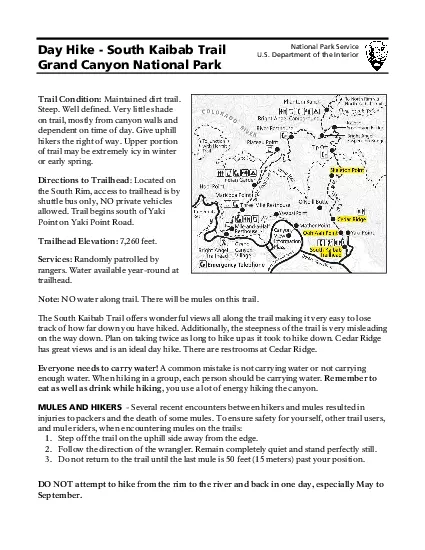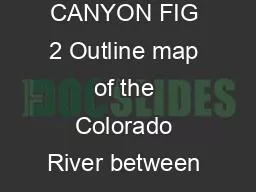PDF-Hiking Into Grand Canyon
Author : eleanor | Published Date : 2021-08-15
Plan AheadWhether a day or overnight trip hiking into Grand Canyon on the Bright Angel North Kaibab or South Kaibab trails gives an unparalleled experience that
Presentation Embed Code
Download Presentation
Download Presentation The PPT/PDF document "Hiking Into Grand Canyon" is the property of its rightful owner. Permission is granted to download and print the materials on this website for personal, non-commercial use only, and to display it on your personal computer provided you do not modify the materials and that you retain all copyright notices contained in the materials. By downloading content from our website, you accept the terms of this agreement.
Hiking Into Grand Canyon: Transcript
Download Rules Of Document
"Hiking Into Grand Canyon"The content belongs to its owner. You may download and print it for personal use, without modification, and keep all copyright notices. By downloading, you agree to these terms.
Related Documents

